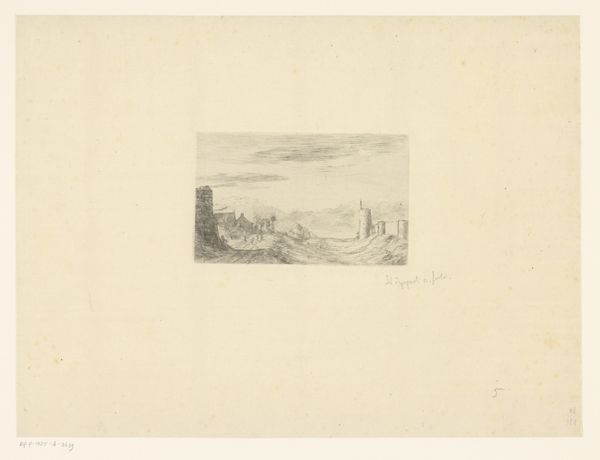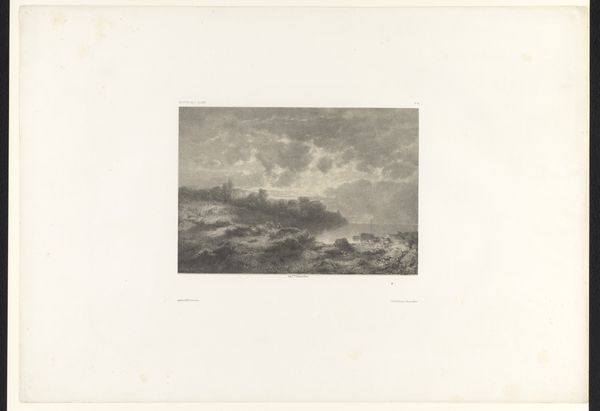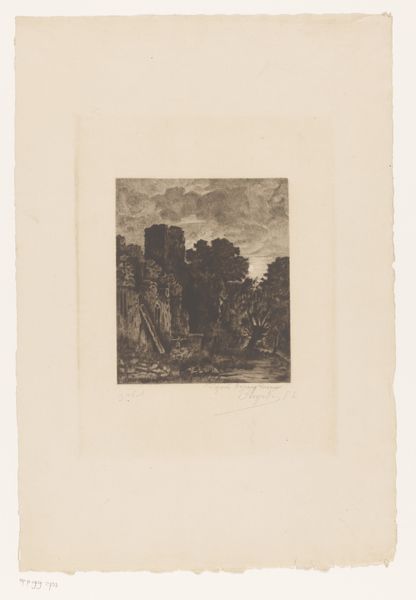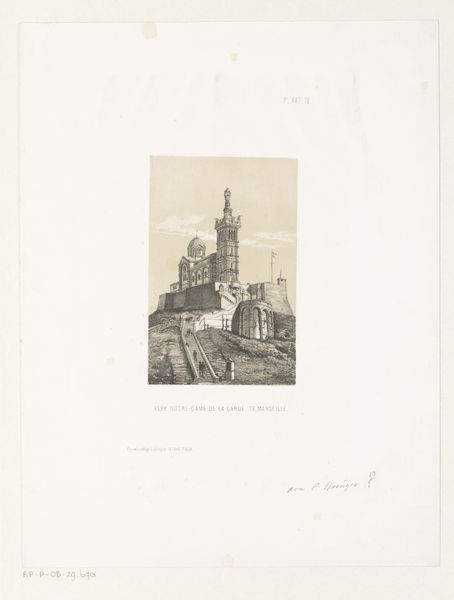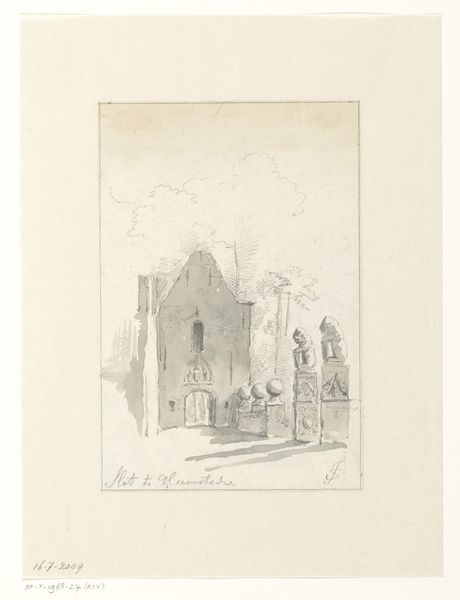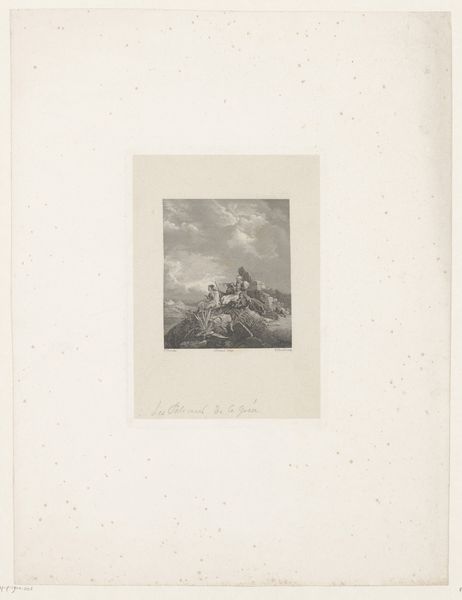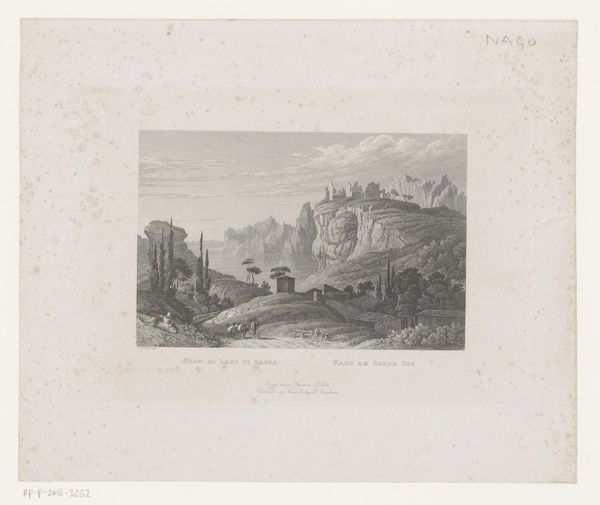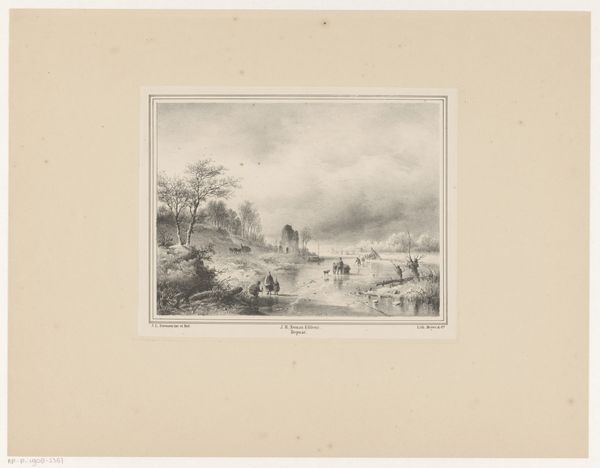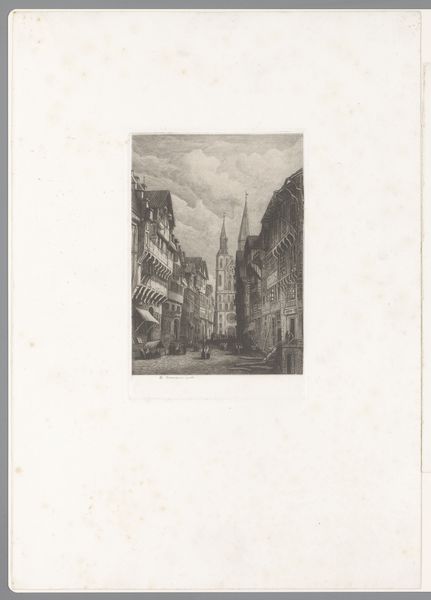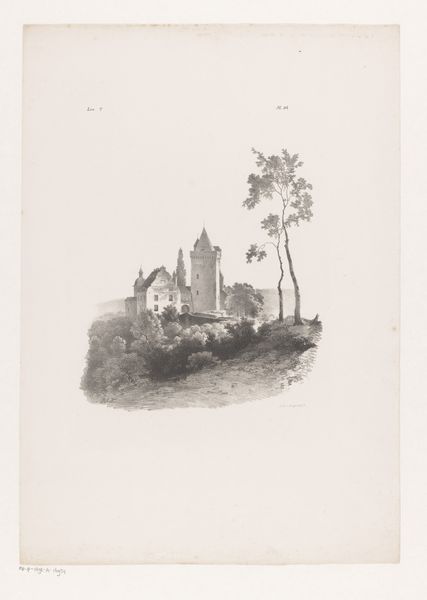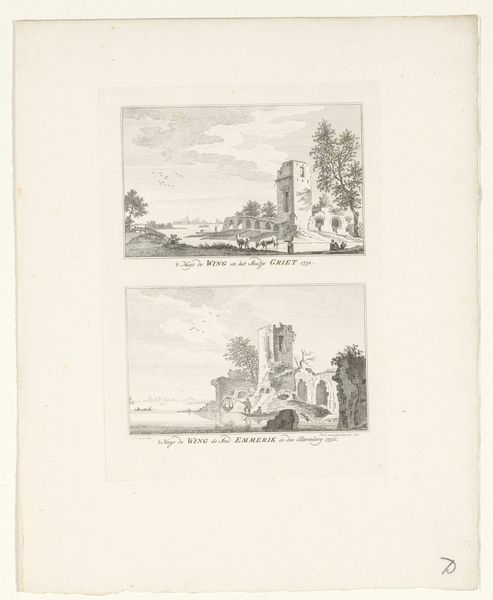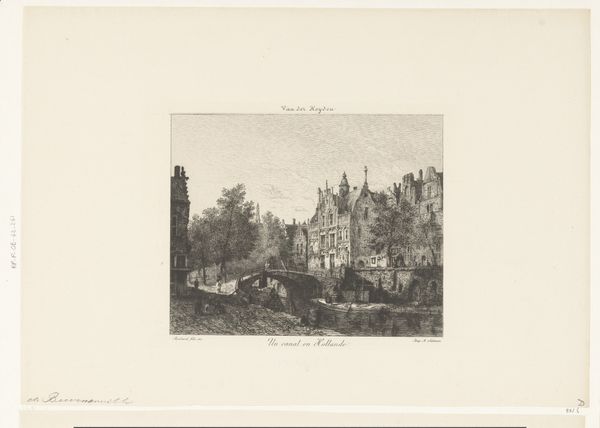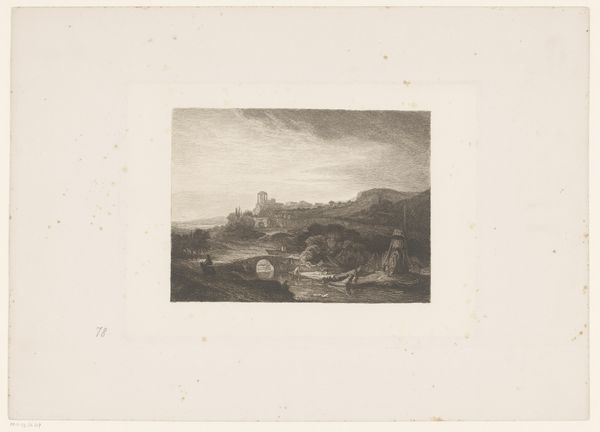
drawing, paper, ink
#
drawing
#
landscape
#
figuration
#
paper
#
form
#
ink
#
romanticism
#
line
#
cityscape
#
realism
Dimensions: height 338 mm, width 251 mm
Copyright: Rijks Museum: Open Domain
Editor: This drawing, "View of a Cathedral" by Jean-Baptiste Isabey, created in 1818, really captures a sense of quiet grandeur, don't you think? It's made with ink on paper, giving it a delicate feel. What strikes you most about it? Curator: Formally speaking, the linear perspective dictates our reading. The artist directs the eye upward towards the cathedral’s towering spire. Notice how the architectural mass is broken up through value and repetition. The dark lines of the cathedral play against the cloudy, ethereal sky. Editor: The sharp lines of the architecture against the softness of the sky do create a striking contrast. Do you think that contrast is important to how we should be interpreting this work? Curator: Undoubtedly. Consider the function of line as contour here, and its structural quality. It not only outlines the architecture but establishes depth and texture through hatching. The buildings sit upon what appears to be natural mountainous geography, and Isabey uses form, like a semiotic device, to guide us towards comprehending the buildings as structural masses. Notice, the sky is rendered by the ink, but the form dissolves into an ambiguous space, becoming cloudlike and atmospheric, creating a kind of limit point. What does that structural and tonal tension between the groundedness of architecture against that upper register’s openness represent, do you suppose? Editor: I never considered that. The contrast creates such a nice sense of visual complexity. Looking closer, the intricate details really draw me in. I am struck by the Romantic landscape tradition! Curator: The picturesque ideal clearly resonates throughout Isabey's work, where he orchestrates nature's inherent dynamism into structured compositions that still allow a sensation of sublime vastness. Editor: I'll definitely be looking at drawings with new eyes from now on, noticing how the structural components contribute to a larger idea!
Comments
No comments
Be the first to comment and join the conversation on the ultimate creative platform.
